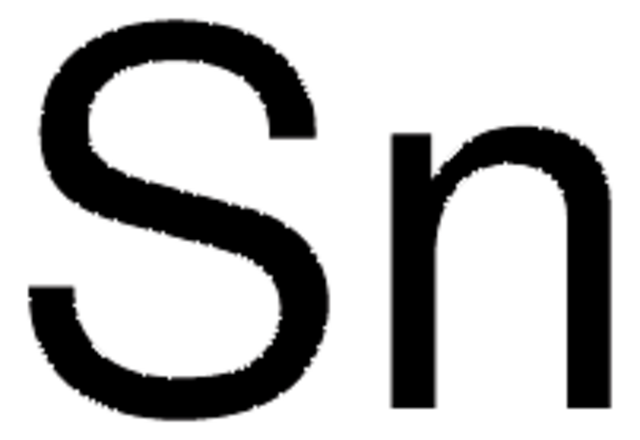264113
Indium
beads, diam. 2-5 mm, 99.999% trace metals basis
Synonym(s):
Indium element
About This Item
Recommended Products
vapor pressure
<0.01 mmHg ( 25 °C)
Quality Level
Assay
99.999% trace metals basis
form
beads
resistivity
8.37 μΩ-cm
diam.
2-5 mm
mp
156.6 °C (lit.)
density
7.3 g/mL at 25 °C (lit.)
SMILES string
[In]
InChI
1S/In
InChI key
APFVFJFRJDLVQX-UHFFFAOYSA-N
Looking for similar products? Visit Product Comparison Guide
Related Categories
General description
Application
- Exploring Layered Disorder in Lithium-Ion-Conducting Li(3)Y(1-x)In(x)Cl(6).: Investigates the effect of indium substitution in lithium yttrium chloride solid electrolytes, enhancing ionic conductivity and stability for battery applications ( Banik et al., 2024).
- Ultrasoft and Ultrastretchable Wearable Strain Sensors with Anisotropic Conductivity Enabled by Liquid Metal Fillers.: Develops a flexible, stretchable strain sensor using indium-based liquid metal fillers, targeting applications in wearable electronics ( Choe et al., 2022).
- A smelting-rolling strategy for ZnIn bulk phase alloy anodes.: Describes a novel processing technique for zinc-indium alloy anodes that enhances electrochemical performance and durability in batteries ( Chai et al., 2022).
- In-MOF-Derived Hierarchically Hollow Carbon Nanostraws for Advanced Zinc-Iodine Batteries.: Presents a method to fabricate hierarchically hollow carbon nanostructures from indium-based metal-organic frameworks, improving the energy storage capacity of zinc-iodine batteries ( Chai et al., 2022).
Signal Word
Danger
Hazard Statements
Precautionary Statements
Hazard Classifications
STOT RE 1 Inhalation
Target Organs
Lungs
Storage Class Code
6.1C - Combustible acute toxic Cat.3 / toxic compounds or compounds which causing chronic effects
WGK
WGK 1
Flash Point(F)
Not applicable
Flash Point(C)
Not applicable
Personal Protective Equipment
Choose from one of the most recent versions:
Already Own This Product?
Find documentation for the products that you have recently purchased in the Document Library.
Customers Also Viewed
Articles
Solid state and materials chemistry have made a tremendous impact and have experienced growth in recent years, particularly for rare earthcontaining materials.
Our team of scientists has experience in all areas of research including Life Science, Material Science, Chemical Synthesis, Chromatography, Analytical and many others.
Contact Technical Service



